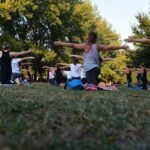Understanding OSHA 1910.29: An Overview
The Occupational Safety and Health Administration (OSHA) in the United States plays a crucial role in ensuring workplace safety and health standards are met across various industries. More specifically, OSHA 1910.29 offers the fundamental guidelines pertaining to fall protection systems and criteria. Enacted to prevent falls from elevated surfaces, OSHA 1910.29 sets forth requirements that every employer must adhere to in order to maintain a safe working environment.
Key Provisions of OSHA 1910.29
OSHA 1910.29 outlines detailed provisions concerning the design, performance, and use of guardrail systems, safety net systems, and personal fall protection systems. Employers are mandated to assess workplace hazards and implement appropriate measures to mitigate risks of falls, thereby safeguarding the well-being of employees. This regulation encompasses specifications regarding guardrail height, strength, and construction materials, as well as guidelines for the installation and maintenance of safety nets and personal fall arrest systems.
Employer Responsibilities Under OSHA 1910.29
Compliance with OSHA 1910.29 requires employers to conduct thorough evaluations of their work environments to identify potential fall hazards. Subsequently, employers must devise and implement effective fall protection plans tailored to their specific operations. This entails providing adequate training to employees on the proper use of fall protection equipment, conducting regular inspections of safety devices, and promptly addressing any deficiencies or hazards that may arise. In addition, employers must maintain detailed records of fall protection training and equipment inspections to demonstrate compliance with OSHA standards.
Consequences of Non-Compliance
Failure to adhere to the guidelines outlined in OSHA 1910.29 can have severe consequences for employers, including hefty fines, legal liabilities, and reputational damage. Moreover, non-compliance poses significant risks to the safety and well-being of workers, potentially resulting in serious injuries or fatalities from falls. By prioritising compliance with OSHA regulations, employers not only uphold their legal obligations but also demonstrate a commitment to ensuring the health and safety of their workforce.
Ensuring Ongoing Compliance and Safety
In order to maintain compliance with OSHA 1910.29 and promote a culture of safety in the workplace, employers must continually assess and improve their fall protection measures. This involves staying informed about updates and amendments to OSHA regulations, conducting regular safety audits and risk assessments, and fostering open communication channels with employees to address safety concerns. By investing in comprehensive safety protocols and prioritising the welfare of their workers, employers can create a secure and productive work environment for all.
















